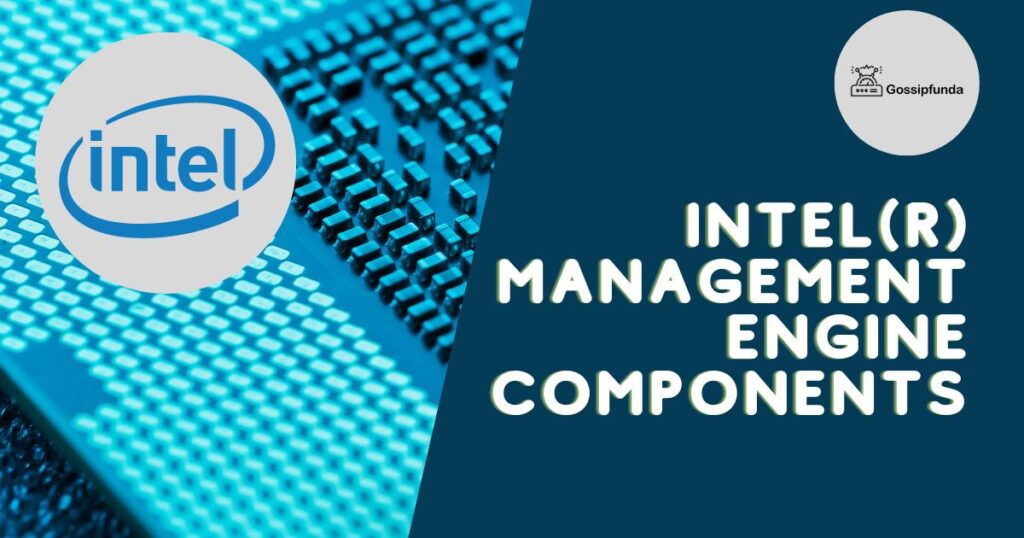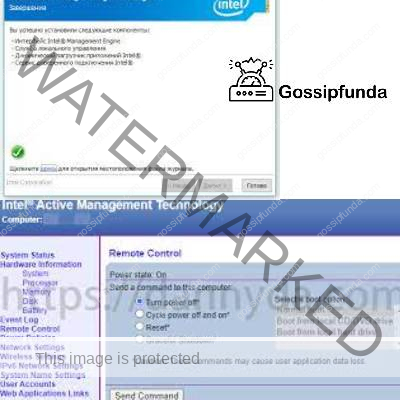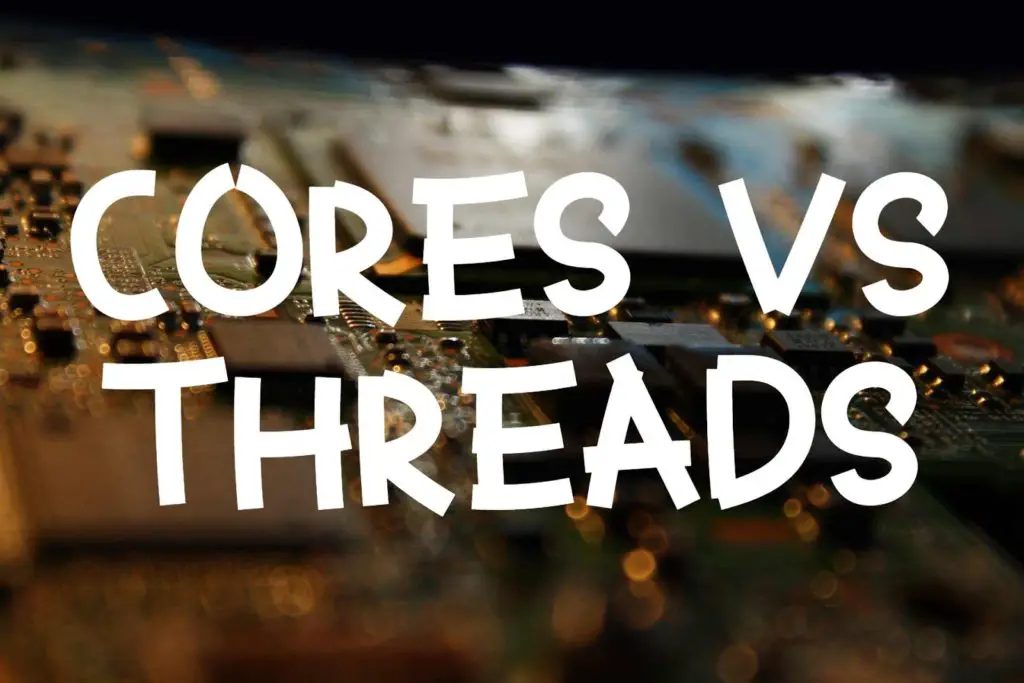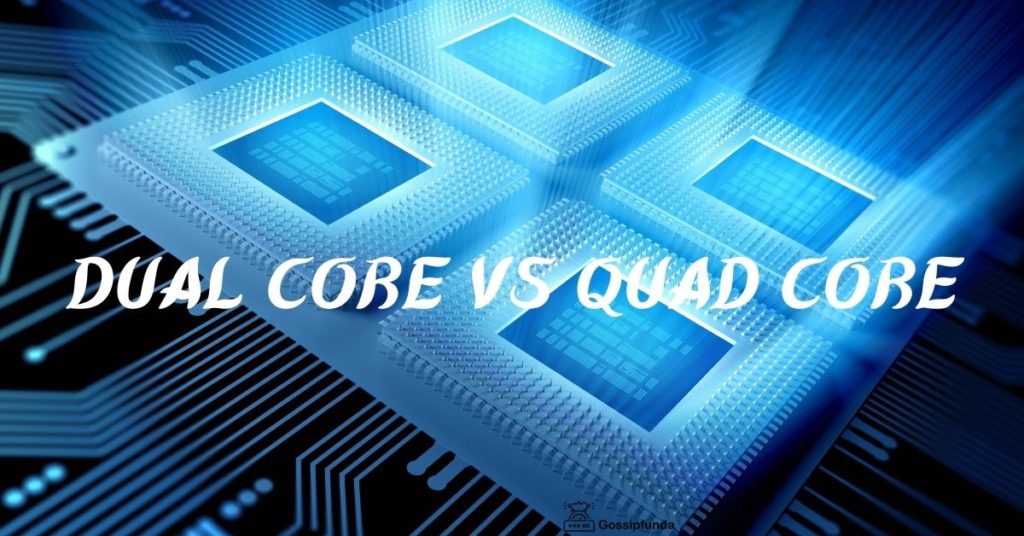The Intel(r) Management Engine is a collection of tools, hardware, and software that is placed inside the Intel CPUs, which is also called the Manageability Engine. The Management Engine provides remote out-of-band management capabilities, including remote monitoring, troubleshooting, maintenance, and repair of Personal computers and workstations. The Intel(r) Management Engine consists of a number of components, including the Intel Management Engine Interface (MEI), the Local Management Service (LMS), and the Serial over LAN (SOL) feature. It is a microcontroller embedded in the Platform Controller Hub of certain Intel chipsets.
The ME was initially designed to provide basic security and remote management capabilities for business PCs. However, its capabilities have been expanded over time, and it is now used for a variety of purposes, including power management, hardware monitoring, bootstrap loading, and platform security. The ME has full access authority to the host’s memory and input-output, it executes independently of the host CPU, BIOS, and operating system. The Intel(r) Management Engine is integrated into some Intel chips for running a lightweight microkernel OS (operating system) which provides a variety of services for Intel(r) processor-based computer systems. It also provides a platform for running third-party applications.

These chips and software were first introduced in the early 2000s. These chips were the root of ‘trust’ in computers. It notifies users if there are any updated drivers, issues, or some other important information about components installed by computer manufacturers at the time of OS installation. This problem can be prevented by the deployment of hardware devices, which it is able to disconnect the main power.
Intel ME v/s Intel AMT

The Management Engine often gets confused with Intel AMT, abbreviated for Intel Active Management Technology. Active Management Technology gives remote administration of their computer to the owners like powering it on or off and installing the operating system. Its main advantage is that it allows someone to monitor, maintain, upgrade and repair the computer.
Design
The subsystem primarily has proprietary firmware running on an isolated microprocessor that mainly performs tasks while boot-up, the computer is running, or asleep. It continues to run even if the system has turned off, i.e. power supply via battery.
Firmware
The firmware provides the basics, it is like the bridge between hardware and the Operating system. The firmware name on ME is Server Platform Services. Before the invention of AMT v.11 CSME was called Intel Management Engine BIOS Extension abbreviated as Intel MEBx.
- Server Platform Services (SPS) – is for testing.
- Trusted Execution Engine (TXE) – tablet / low power.
- Management Engine (ME) – mainstream chipsets.
Hardware
Older versions were based on ARC core, ME running in ThreadX RTOS. Versions 1 to 5 of ME used the ARC ME 11, which is based on Intel Quark 32-bit x86-based CPU and runs the MINIX Operating system. ME 7.1, the ARC processor could execute mainly on signed Java applets. Each management interface has its own media access control and internet protocol address. For the older version, the Management Engine communicates with the host via the Peripheral Component Interconnect (PCI) interface in windows. ME are found embedded in motherboards, with newer Intel Architectures (Intel 5 onwards), ME is integrated into Platform Controller Hub (PCH).
Modules
- Serial over LAN (SOL)
It’s a medium in which data is sent to the receiver via a LAN. It enables the working of input and output. This also allows the user to access the application or run the application on the specified ports if needed or else it will run on default ports.
- Active Management Technology (AMT)
AMT manages the behavior of the system remotely, even if it is not visible to the user directly. But allows if they had credentials they can control the changes like updates and repair management.
- Intel Boot Guard (IBG)
It checks the code whether it is legitimate to run on the CPU if it finds any things not compatible it will reject the code to run. IBG is like the root system for Intel to trust. It monitors the installation replacement done by users.
- Secure Boot
Is similar to reboot but the main benefit of secure boot is that it will be booted in a secure mode. It helps to prevent malicious attacks on the device. Secure boot is supported by Windows 8, 8.1, 10, VMware vSphere 6.5, and Linux distributions like Fedora.
- Quiet System Technology (QST)
Monitors the physical environment of the device fan speed, noise, temperature, etc. If it found that system noise then it reduces the overloading by minimizing fan speed changes. It can be minimized in another way like purchasing a device with a fan that has the capacity to control the speed and temperature.
- Protected Audio Video Path
It is like the security system for the computer while we play any video or audio. This means it protects the data or information which may be sensitive. It is mainly used to secure the environment while working with audio and video.
- Intel Platform Trust Technology (PTT)
Enables the support system for the device by storing keys used by OS, it helps storage with low cost and power devices also. TPM 2.0 is a microcontroller that stores keys, digital certificates, and passwords.
- Near Field Communication (NFC)
It is used for communication with short range to transfer data. Mostly it is used for transferring data in small amounts. Some examples like sending documents, payments, and transferring contacts.
Security Vulnerabilities
Vulnerabilities are the drawbacks of the system that may affect the overall working of the device. By using a few software or files we may face some problems. By using Management Engine, some of the users faced security vulnerabilities. Disabling, ME functionality affects the management of certain parts of the system. Intel confirmed a Privilege bug of Remote Elevation in its Management Technology. It is helpful to use software that is legal and safe for usage. ME has been found for vulnerabilities in past, but these drawbacks were overcome by new versions of the software.
Main benefits of Intel(r) Management Engine Components
- Anti-Theft Protection
It helps to detect when a laptop is stolen or lost, it secures sensitive and important data by preventing OS from loading and blocking access to encrypted data.
- Capability Licensing Service (CLS)
CLS provides access to Windows OS so that it would communicate with Intel Management Engine directly. By allowing it, it helps to check the authenticity of the OS which is legitimate for accessing the ME.
- Protected Audio Video Path (PAVP)
It provides security for the integrated graphics processor, while we are using a third party for running audio and video files. This ensures the protection of the system.
- Better Battery Life
It reduces power consumption and puts the CPU, and other components in a lower power state when the computer is not in use or idle. Which improves the efficiency of the resources by only allowing necessary requirements for important processes. By means of which the battery life is handled better.
- Faster Boot Time
With the help of Intel Boot Guard, it validates boot block code. It also prevents unauthorized firmware access, applications, or operating systems from misuse or corrupting the boot process which helps for faster booting.
Earlier, Intel Management Engine Components were not available for public use. It was included along with the motherboard, BIOS, or other drivers. If you are looking for an Intel Management Engine Components download, then here is the direct download link for the latest version. The Intel(r) Management Engine loads the code from the system’s flash memory.
Read Also: Intel Optane memory pinning
Conclusion
At basic, the Intel(r) Management Engine helps to protect the device from unusual access from third-party users. It provides security, by checking the permission level of access it has. There are a few flaws found in Intel(r) ME, these flaws lead to serious effects on the business part of the economy. Hence these ME’s were upgraded to new versions, which overcomes all the drawbacks of older versions and also helps to build security, accessibility, and integrity of the personal system.
It helps to reduce the maintenance cost, and power consumption significantly, which increases its efficiency. Intel(r) Management Engine Components monitors the changes occurring in the system, which includes installation, and updating of drivers and disks. The physical monitoring of the system disks and drivers for end users may be difficult to understand or proceed with. Thus ME components help us by monitoring the changes. The Intel(r) Management Engine Components were basic for the development of security and capability of the systems.
FAQs
If you want to check for Intel Management Engine Components in your device. Go to Device Manager either by typing on the search bar at the taskbar or right-clicking on the Windows symbol then check for ‘system devices’. Click on the system device, and if you can see Intel(r) Management Engine Interface driver then it is installed on your device. If you are not able to see it means either it is not installed or you have uninstalled it.
It is not recommended to turn off or disable Intel(r) Management Engine. Because ME manages certain parts of the system and ME is processing part of the boot. But the point is if you are using a modern computer then, it is not possible to disable the Intel(r) ME. If suppose you are experiencing some drawbacks or software glitches then you can disable it.
It manages the device, personal computer, and workstation. It monitors the system remotely, which helps to recover the system i.e. it provides system admin access. Even though it is not exposed to the end user, if the user has accessibility using credentials then they can look after the updates and repairs.
My self Jean Acker, an SEO specialist. MS from the reputed college MIT. I am an innovative person, as well as have a sound interface with tech. Honestly, I easily supervise my meditations as well as my experimentation with Android and iOS.


